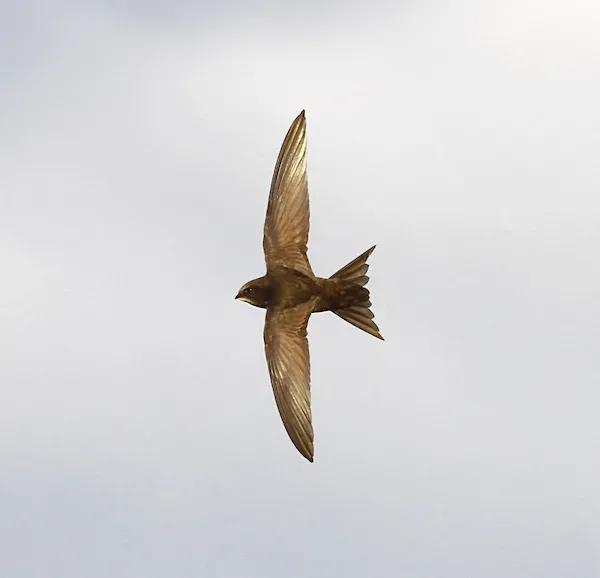Citation

Overview
Data from the BTO/JNCC/RSPB Breeding Birds Survey reveal that breeding Swift populations in the UK are in decline. Both reductions in the availability of invertebrate prey and the loss of nesting sites have been suggested as possible reasons, but the ultimate drivers of this decline are poorly understood. Can we improve our understanding of Swift decline by bringing together the information collected by bird ringers and nest recorders alongside data on insect availability and weather?
Abstract
In common with many other insectivorous birds, the Common Swift Apus apus is undergoing population declines, with an estimated 57% reduction in abundance between 1995 and 2017 in the UK. The ultimate drivers of this decline are poorly understood, but links have been drawn to reductions in the abundance and availability of insect prey, as well as loss of nesting sites. The aim of this study is to improve understanding of the demographic and environmental drivers of Swift decline in Great Britain, with a particular focus on weather and aphid biomass. We explore spatio-temporal trends in the biomass of aphids, an important source of food for these aerial feeders, from a network of seventeen 12.2 m suction-traps. We then use data from national nest recording and ringing schemes to describe temporal trends in, and covariates of, Swift breeding success and annual survival. Demographic data are sparse prior to the mid-1990s but show stable adult survival, a reduction in first-year survival and an increase in nest failure rate since the mid-1970s. Despite marked declines in aphid biomass across much of southern and eastern England during this period, we find no association between aphid biomass and Swift demography. Weather was a stronger correlate of variation in Swift demography, with increased precipitation associated with smaller brood size, higher nest failure rate and lower first-year survival. Our data suggest that falling first-year survival, partly linked to wetter summers, may be the most likely demographic driver of population decline. Given that the only convincing correlates of Swift demography were weather-related, we suggest it would be precautionary for conservation efforts to continue to focus on ensuring that safe and productive nesting sites are in sufficient supply. Further research to identify habitats and land management practices which provide foraging resources, particularly during periods of inclement weather, is required, and future demographic modelling exercises would benefit from increased nest recording and ringing efforts.
Acknowledgements
The authors thank all those who have ringed Swifts, reported finding them dead, or recorded their nests, mostly in a voluntary capacity. The Ringing and Nest Record Schemes are supported by JNCC (on behalf of Natural England, Natural Resources Wales, Scottish Natural Heritage and the Department of the Environment, Northern Ireland). The Rothamsted Insect Survey, a National Capability, is funded by the Biotechnology and Biological Sciences Research Council under the Core Capability Grant BBS/E/C/000J0200. The Royal Society for the Protected of Birds contributed to the costs of data computerisation and analysis. The authors are also grateful to Dario Massimino (British Trust for Ornithology) for calculating the habitat-specific BBS trend estimates, and to Chris Perrins and two anonymous reviewers for helpful comments on the manuscript.
